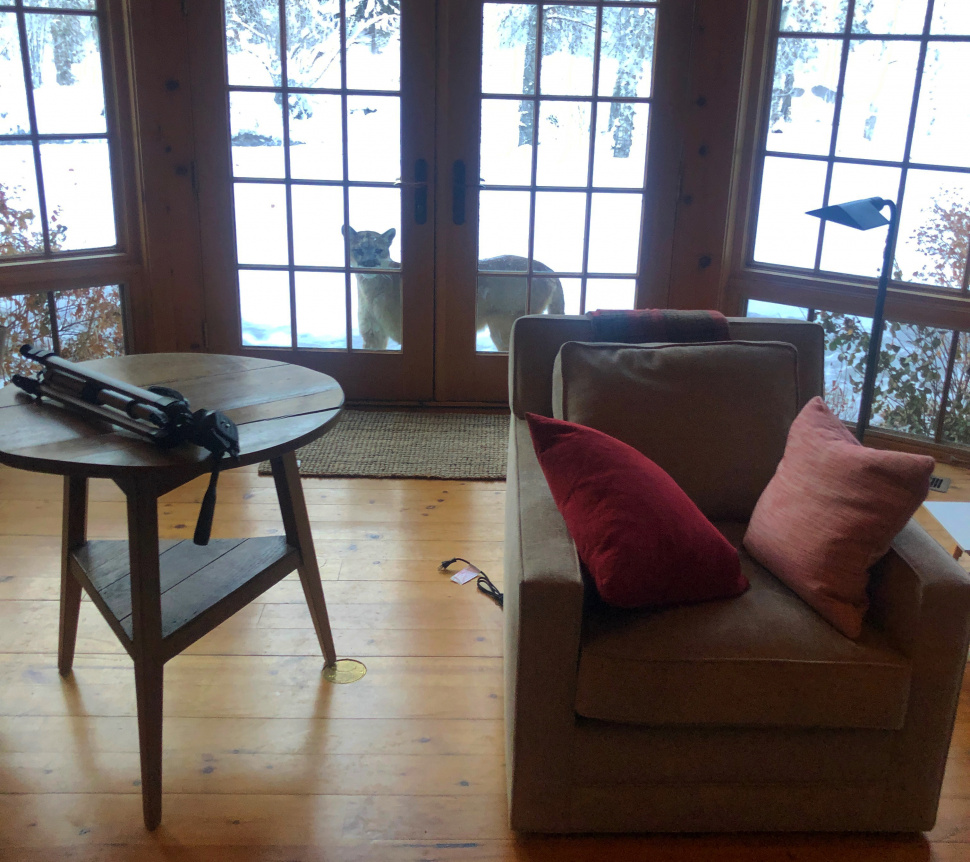Fish and Game has begun to get increasing reports of black bears looking for and finding food in residential neighborhoods. The key to keeping Idaho bears wild is to not allow them to access human food around neighborhoods, homes or your campsite.
After spending the winter months hibernating, black bears have now emerged from their dens. Once out of their dens, they are very hungry. Bears will immediately start looking for food, mostly spring grasses, but in reality, they will pretty much eat anything that can provide easy calories.

Residential garbage is scattered after a food conditioned black bear tipped over the garbage cart in Ketchum, June 2021
Feeding bears, even unintentionally, can attract them in to our communities and neighborhoods, creating potential public safety concerns.
Bears can learn very quickly to associate people with food. The presence of unsecured human food sources like residential garbage, bird feeders, dog food, chicken coops, or even fruit trees, can, and does cause human-bear conflicts.
The sad outcome of a food-conditioned bear in or near communities is that a once wild bear has now become a threat to public safety. Once this happens, euthanasia is the most likely outcome, as public safety will always take precedent. The black bear who becomes conditioned to human food can quickly become aggressive.
Secure residential garbage
Residents in the Starweather subdivision north of Hailey have reported an adult cinnamon-colored black bear frequenting homes in search of food. Unfortunately, the bear has been successful in finding unsecured garbage carts. Residents throughout the Wood River Valley are strongly encouraged to keep their garbage carts in their garages, or in secured sheds. Garbage carts should never be taken to the curb the night before pick-up, but rather put out the morning of pick-up.

Many have heard the saying “a fed bear is a dead bear” which is an unfortunate reality.
Mountain lions continue to be observed in the Wood River Valley
After several reports of pet cats being killed by mountain lions within the community of Hailey, Fish and Game attempted to trap and remove a lion from within city limits. Trapping efforts were unsuccessful, since trapping a mountain lion can be very difficult.
While trapping was unsuccessful, the reports of missing or killed domestic cats has continued.

Most of Idaho’s lion habitat already have lions occupying that space. While trapping and relocating a nuisance lion may ease public sentiment, it usually does not end well for the lion. Often the most humane way of dealing with a lion that has become a threat to public safety is to euthanize it, rather than having it die in a territorial fight with another lion.
Many residential security cameras continue to record mountain lions frequenting areas around homes throughout the Wood River Valley.
Residents should always remain vigilant to wildlife that may be near their homes, such as mountain lions or black bears, and even moose, elk and deer, all of which can be aggressive for a variety of reasons, including protection of young, many of which will begin to be born towards the end of May.
Reports of aggressive coyotes
Idaho has an increasing human population and an increased interest in outdoor recreation by both residents and visitors to Idaho. With more people recreating in Idaho’s wildlands, the chances of more incidental interactions increases. Across southern Idaho, reports of aggressive coyotes attacking pet dogs has increased, often during spring when pups are being born. These attacks occur when dogs are allowed to run off-leash. Reports have been received in the Wood River Valley of an aggressive coyote attacking or chasing unleashed dogs on trails and bike paths.

To protect dogs and all wildlife, pet owners need to keep their dogs on leash when recreating on area trails.
It’s a community responsibility to keep all wildlife, wild
Idaho residents that live in close proximity to wildlife value that opportunity. However, that also means everyone shares the responsibility to keep wildlife wild. Allowing wildlife like moose, bears, and lions to become comfortable living in your neighborhood inevitably results in conflict and often leads to unfavorable outcomes for wildlife we all treasure here in Idaho.
When a bear or lion learns that walking across your yard or deck is OK, it will continue that behavior. By doing nothing, wildlife learns that people are harmless and that making daily walks around your house is both acceptable and potentially rewarding if they find food or shelter.

Although Fish and Game does not want to euthanize bears or mountain lions, public safety will always be the priority. Bear and lion relocation has 4 potential outcomes:
1) The bear or lion returns,
2) It’s killed in a territorial dispute or by a dominant animal already occupying that space,
3) It starves, or;
4) It resumes doing what it was doing in a new location.
Rarely does a habituated bear or lion resume what we would consider “normal” behavior.
To learn more about safety tips when around wildlife, visit the Wood River Valley Wildlife Smart Communities website at www.wrvwildlifesmart.org or contact the Magic Valley Regional Office at (208) 324-4359.

